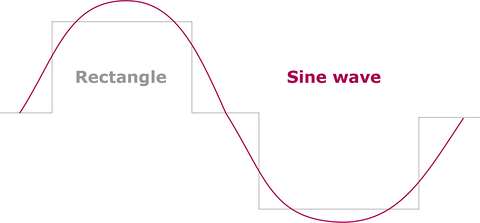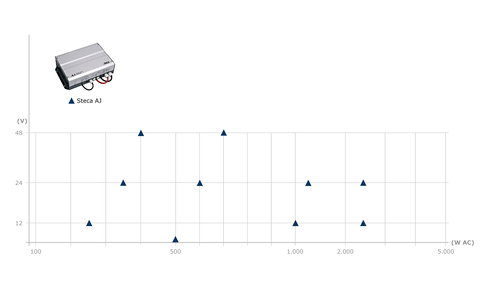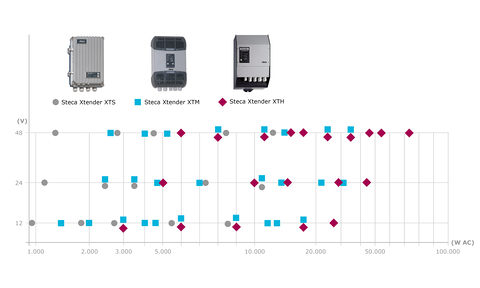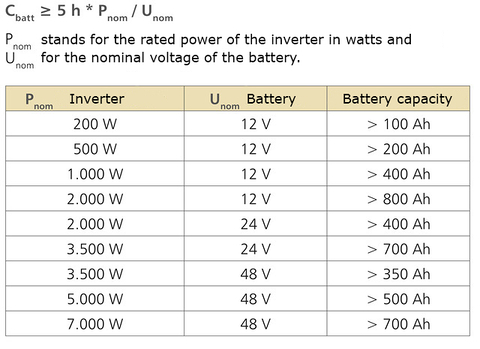Inverter selection
General recommendations for AC and hybrid systems

In contrast to square wave or trapezoidal wave inverters (grey square wave curve), Steca sine wave inverters generate a real and precisely controlled sine wave (red sine wave) at their output.
The sine wave inverters ensure that all consumers suitable for grid operation can also be operated in a solar home system without any issue. They also offer the advantage that no significant noise is generated in the inverter and, for example, no strong background noise is caused in connected radios.
The sine wave inverters ensure that all consumers suitable for grid operation can also be operated in a solar home system without any issue. They also offer the advantage that no significant noise is generated in the inverter and, for example, no strong background noise is caused in connected radios.
Inverter selection

The power of the inverter must be selected according to the use type. The total power of all loads must not exceed the nominal power of the inverter. The maximum power of the inverter must be able to cover the starting currents of the loads. In order to allow the connection of additional consumers, Kontron Solar GmbH recommends for the inverter to be dimensioned.
Selection of the PV generator and solar charge controller

The solar module array must be adapted to the local irradiation conditions and the energy requirements of the system. In order to avoid downtimes, the PV generator must provide sufficient power to cover the demand of the connected consumers even in months with low solar irradiation. The selected solar charge controller must be specified for the max. short-circuit current of the PV generator and the max. load current. In some applications, however, technical characteristics also play an important role in the selection of the solar charge controller. This can mean that a powerful solar charge controller with corresponding additional functions should be used in a low-power system. In order to keep the initial investment low, we recommend designing the size of the PV generator and the battery according to the current energy consumption and selecting the solar charge controller in such a way that allows the system to be expanded later.
Battery selection

To facilitate a seamless supply to consumers with high demands, the size of the battery must be chosen carefully. Some critical loads such as refrigerators, chest freezers, pumps and motors, require extremely high starting currents during the start-up phase. To be able to operate them, it is important to use a powerful inverter with high overload capacity, especially during the start-up phase. The battery must also have sufficient capacity to quickly provide the inverter with sufficient current during start-up. We recommend determining the battery size according to the following formula: The battery capacity should be at least five times the rated power of the inverter divided by the rated voltage of the battery.
Selection of the system voltage
The power requirement of the loads should be the deciding factor when selecting the system voltage. The higher the power, the higher the system voltage. If no 12 V DC consumers are connected to the system, a higher system voltage of 24 V or 48 V should be preferred in order to reduce the DC currents and therefore the losses on the DC side. Inverters also usually work more effectively with a higher input voltage. Overall, a higher system voltage leads to better efficiency of the system, as fewer losses occur.
Cable lengths and cross-sections
DC currents are typically high in inverter systems. Therefore, it is important to adequately dimension the cables between the battery and the inverter. Always connect the inverter directly to the battery. The cable used should be as short as possible. The cable cross-section should also be appropriate for the expected current flow. If in doubt, choose a thicker cable. This can have a significant impact on the overall performance of the system. Thick and short cables can limit losses, achieving better efficiency or higher system performance. If the cables on the DC side of the inverter are included in the scope of delivery, do not lengthen them or use smaller cross-sections.

